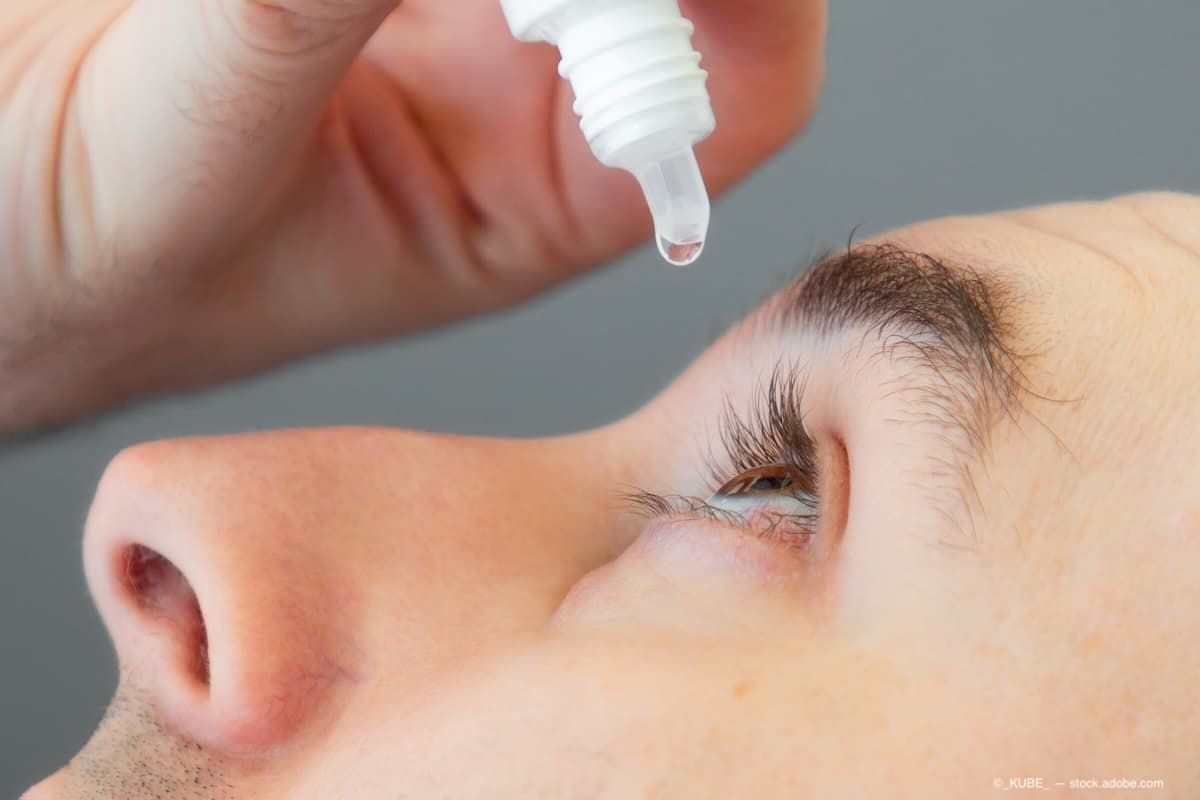Article
BLOG: Counseling surgical patients about ocular surface disease
Author(s):
Alice Epitropoulos, MD, goes over some tips and methods to educate patients about OSD before performing any surgery.
(Image Credit: AdobeStock/Ngampol)

In an ophthalmic preoperative surgical evaluation, it is natural to be focused on the state of the cornea or lens, patient interest in spectacle independence, and IOL measurements. After all, preparing for cataract or refractive surgery is the reason the patient is in your chair.
However, many of these patients have concomitant ocular surface disease (OSD) that could affect the accuracy of preoperative measurements, quality of vision, and/or symptoms after surgery.
It is important to educate patients about OSD before performing any surgery. At minimum, we want them to understand that our surgery is not to blame for OSD-related symptoms. Even more importantly, we can offer treatment (where appropriate) to maximize visual quality and ensure accurate preoperative measurements.
When patients have an OSD such as meibomian gland dysfunction (MGD), as evidenced by poor meibomian gland functioning secretions, it can often result in gland atrophy or dropout, and decreased tear break-up time (TBUT). I have personally seen significant benefits from thermal pulsation system (TPS) treatment before surgery in these cases.
Cynthia Matossian, MD, showed that stabilizing the tear film with preoperative TPS resulted in more accurate correction of astigmatism at the time of cataract surgery, with less residual refractive astigmatism than if the toric correction had been planned using pre-TPS keratometry.1 And in a contralateral eye study in which patients with MGD underwent LipiFlow thermal pulsation in one eye prior to bilateral cataract surgery, Zhao et al showed that the treatment was effective in alleviating blockage of meibomian glands and in preventing worsening of TBUT after cataract surgery.2
Similarly, if aqueous deficiency and/or inflammation is a factor in the dry eye, I will start the patient on an immunomodulator prior to any surgery. Several colleagues and I have shown that cataract surgery outcomes can be improved when IOL measurements are obtained following a 28-day course of topical therapy in appropriate candidates.
For example, patients with confirmed dry eye who were treated with lifitegrast 5% had more accurate biometry readings after 28 days of twice-daily treatment.3 Similarly, patients treated with cyclosporine 0.09% twice daily showed a statistically significant improvement in the prediction error of the spherical equivalent outcome of surgery, and were more likely to achieve the target refraction than if pre-treatment measurements had been used.4
Finally, it is important to continue support for a healthy ocular surface after surgery. For postoperative surgical patients who also have OSD, I encourage the use of lid hygiene, warm compresses, high-quality and preservative-free artificial tears, and Vitamin A ointment at night.
I have patients continue immunomodulators if needed, after surgery. I am also an advocate of starting a re-esterified triglyceride (rTGC) form of omega-3 supplements preoperatively to optimize the health of the surface and accuracy of biometry. I will continue those supplements postoperatively in MGD patients to help prevent exacerbation of dry eye symptoms. A recent study has shown that 8 weeks of daily supplementation with 2 g of these supplements improves the signs and symptoms of new-onset dry eye after uncomplicated cataract surgery.5
By making sure we are taking care of the ocular surface before, during, and after surgery, we can achieve the best outcomes for our patients.
References:
Matossian C. Impact of thermal pulsation treatment on astigmatism management and outcomes in meibomian gland dysfunction patients undergoing cataract surgery. Clin Ophthalmol 2020;14:2283-9.
Zhao Y, Li J, Xue K, et al. Preoperative management of MGD with vectored thermal pulsation before cataract surgery: A prospective, controlled clinical trial. Semin Ophthalmol 2021;36(1-2):2-8.
Hovanesian J, Epitropoulos A, Donnenfeld ED, Holladay JT. The effect of lifitegrast on refractive accuracy and symptoms in dry eye patients undergoing cataract surgery. Clin Ophthalmol 2020;14:2709-16.
Hovanesian JA, Berdy GJ, Epitropoulos A, Holladay JT. Effect of cyclosporine 0.09% treatment on accuracy of preoperative biometry and higher order aberrations in dry eye patients undergoing cataract surgery. Clin Ophthalmol 2021;15:3679-86.
Park J, Yoo YS, Shin E, et al. Effects of the re-esterified triglyceride (rTG) form of omega-3 supplements on dry eye following cataract surgery. Br J Ophthalmol 2020.
Newsletter
Don’t miss out—get Ophthalmology Times updates on the latest clinical advancements and expert interviews, straight to your inbox.




